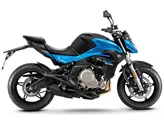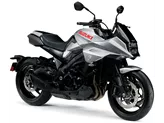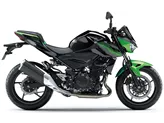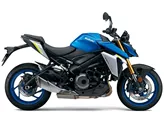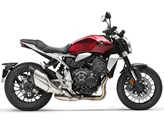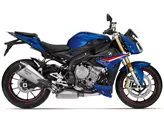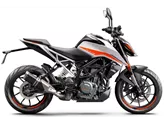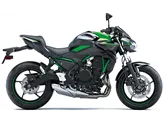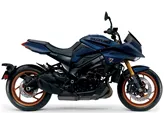Suzuki GSX-S1000 2018 vs. Kawasaki Z650 2017

Suzuki GSX-S1000 2018

Kawasaki Z650 2017
Pregled - Suzuki GSX-S1000 2018 vs Kawasaki Z650 2017
The Suzuki GSX-S1000 2018 and the Kawasaki Z650 2017 are both naked bikes that offer unique features and performance.
Starting with the Suzuki GSX-S1000 2018, it is equipped with a powerful in-line 4-cylinder engine that produces 149 HP and 106 Nm of torque. This engine is fuel-injected and provides smooth and responsive power delivery. The bike also features a liquid cooling system, ensuring optimal engine temperature even during long rides. With a displacement of 999cc, the GSX-S1000 offers impressive performance on the road.
In terms of suspension, the GSX-S1000 is equipped with an upside-down telescopic fork at the front and a swing arm with a monoshock at the rear. The suspension can be adjusted for preload and rebound, allowing riders to fine-tune the bike's handling to their preferences. The frame of the GSX-S1000 is made of aluminum and has a twin tube design, providing a balance between rigidity and weight.
Braking power is provided by double disk brakes at the front with a diameter of 310mm and four pistons. The brakes use radial technology, ensuring precise and powerful stopping power. The bike also features ABS, which enhances safety by preventing wheel lock-up during sudden braking.

Suzuki GSX-S1000 2018
The dimensions and weights of the GSX-S1000 include a front tire width of 120mm and a diameter of 17 inches, while the rear tire has a width of 190mm and the same diameter. The wheelbase is 1460mm, providing stability and maneuverability. The seat height is 815mm, suitable for most riders, and the bike has a kerb weight of 209kg with ABS. The fuel tank capacity is 17 liters, allowing for longer rides without frequent refueling.
The strengths of the Suzuki GSX-S1000 2018 include its stable handling, which inspires confidence in riders. The sporty engine delivers exhilarating performance, accompanied by a sexy look and sound. The bike also offers pleasant riding comfort, making it suitable for both dynamic and relaxed rides. However, some riders have noted that the bike can be a little jerky when transitioning from push to load, and a quickshifter with blipper would be a welcome addition.
Moving on to the Kawasaki Z650 2017, it is powered by an in-line 2-cylinder engine that produces 68.2 HP and 65.7 Nm of torque. Like the GSX-S1000, the Z650 also features fuel injection and liquid cooling. With a displacement of 649cc, the Z650 offers a balanced and smooth power delivery.
In terms of suspension, the Z650 is equipped with a telescopic fork at the front and a swing arm with a monoshock at the rear. The rear suspension can be adjusted for preload. The frame of the Z650 is made of steel and has a tubular design, providing strength and durability.

Kawasaki Z650 2017
Braking power is provided by double disk brakes at the front with a diameter of 300mm and double pistons. The brakes use petal technology, offering efficient heat dissipation and improved braking performance. The Z650 also features ABS for enhanced safety.
The dimensions and weights of the Z650 include a front tire width of 120mm and a diameter of 17 inches, while the rear tire has a width of 160mm and the same diameter. The wheelbase is 1410mm, slightly shorter than the GSX-S1000. The seat height is 790mm, which may be a little too small for taller riders. The bike has a kerb weight of 187.1kg with ABS and a fuel tank capacity of 15 liters.
The strengths of the Kawasaki Z650 2017 include its even power delivery and sporty chassis. The compact dimensions make it agile and easy to maneuver. The bike also features a negative display, which adds to its modern and stylish look. However, some riders have noted that the Z650 may feel a little too small for taller individuals.
In conclusion, both the Suzuki GSX-S1000 2018 and the Kawasaki Z650 2017 offer unique features and performance. The GSX-S1000 excels in terms of power, handling, and overall riding experience. On the other hand, the Z650 offers a balanced power delivery and a compact and agile design. Ultimately, the choice between these two bikes depends on the rider's preferences and priorities.
Tehničke specifikacije Suzuki GSX-S1000 2018 u odnosu na Kawasaki Z650 2017
Prednosti i nedostaci u odnosu na
Prednosti i nedostaci u odnosu na
Suzuki GSX-S1000 2018

The GSX-S 1000 from Suzuki looks sexy, has a powerful sound and really smart hardware. It rides stably, easily and is also fun to ride on tours. If necessary, the engine smokes up violently. But it can also be moved mildly. Compared to the finest Powernakeds, it lacks individual features, but anyone who looks at the price tag will quickly realise: A great choice!
Kawasaki Z650 2017

The Kawasaki Z 650 is the tip of the middle class for small male and female riders. On its compact dimensions, you probably won't feel comfortable as a giant. Heart-warming feelings, however, come from the engine, which delights with a very smooth pull. On the chassis side, a Kawasaki-typical tight set-up was chosen, which finds a great compromise in everyday use. The negative display is very easy to read and is reminiscent of its predecessor, the ER-6n - very nice!
Usporedba cijena Prosječna tržišna cijena Suzuki GSX-S1000 vs Kawasaki Z650
There are a few key differences between a Suzuki GSX-S1000 2018 and a Kawasaki Z650 2017. In terms of price, the actual average price of a Suzuki GSX-S1000 2018 is about 59% higher. A Suzuki GSX-S1000 2018 experiences a loss of 270 USD in one year and 1,010 USD in two years of ownership. This is offset by a loss of 340 USD and 520 USD for a Kawasaki Z650 2017. Compared to Kawasaki Z650 2017 there are less Suzuki GSX-S1000 2018 bikes available on the 1000PS.de Marketplace, specifically 9 compared to 11. It takes less time to sell a Kawasaki Z650 with 76 days compared to 177 days for the Suzuki GSX-S1000. Since model year 2015 1000PS.de editors have written 36 reviews for the Suzuki GSX-S1000 and 31 reviews for the Kawasaki Z650 since model year 2017. The first review for the Suzuki GSX-S1000 was published on 9/27/2014 and now has more than 17,100 views. This compares to more than 25,000 views for the first review on Kawasaki Z650 published on 11/8/2016.



